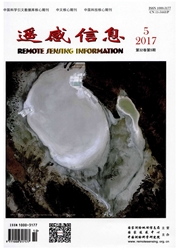

 中文摘要:
中文摘要:
分别用Fluke公司生产的红外热像仪和ASD公司生产的非成像高光谱仪获取了棉花在5个生育时期的冠层的红外热图像和反射光谱。对红外热图像进行了技术处理,并根据Jones定义的作物水分胁迫指数CWSI计算了CWSI;利用光谱分析技术确定了反射光谱654nm和一阶微分光谱738nm处为CWSI的敏感波段;分别建立了它们与CWSI的线性相关模型方程。经检验,CWSI定量模型方程的估算精度分别为72.4%和80.5%。研究结果表明,用红外热图像技术作为获取作物冠层高分辨率空间信息的手段,可以消除背景干扰因素的影响,从而更精确地计算棉花冠层的CWSI。而与反射光谱相比,棉花冠层一阶微分光谱更适用于对棉花水分胁迫指数CWSI进行实时、动态估算。
 英文摘要:
英文摘要:
ThermM images and reflectance spectra of cotton canopy were acquired by using a radiometric video camera from Fluke company and a portable non-imaging hyperspectral spectrometer from ASD company in five growth stages of cotton respectively. The thermal images were processed and the crop water stress index (CWSI) was calculated according to Jones' definition. Through spectrum analysis, both the reflectance spectrum at the wavelength of 654 nm and the first derivative spectrum at the wavelength of 738 nm were considered as the sensitive wavebands of the CWSI. The linear correlation model equations were established. The regression function accuracy values were 72.4 % and 80.5 % respectively. The research result showed that by using infrared thermal imaging technology to acquire h-igh spatial resolution information of crop canopy, the effects of background interference factors could be eliminated and the CWSI of cotton canopy could be calculated more accurately. Compared with the reflectance spectra, the first, derivative spectra was more suitable for the real-time and dynamic calculation of the CWSI of cotton.
 同期刊论文项目
同期刊论文项目
 同项目期刊论文
同项目期刊论文
 期刊信息
期刊信息
